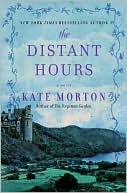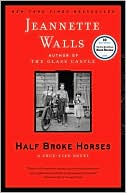How the Garcia Girls Lost Their Accents
The Garcías—Dr. Carlos (Papi), his wife Laura (Mami), and their four daughters, Carla, Sandra, Yolanda, and Sofía—belong to the uppermost echelon of Spanish Caribbean society, descended from the conquistadores. Their family compound adjoins the palacio of the dictator’s daughter. So when Dr. García’s part in a coup attempt is discovered, the family must flee. \ They arrive in New York City in 1960 to a life far removed from their existence in the Dominican Republic. Papi has to find new...
Search in google:
The Garcías—Dr. Carlos (Papi), his wife Laura (Mami), and their four daughters, Carla, Sandra, Yolanda, and Sofía—belong to the uppermost echelon of Spanish Caribbean society, descended from the conquistadores. Their family compound adjoins the palacio of the dictator’s daughter. So when Dr. García’s part in a coup attempt is discovered, the family must flee. They arrive in New York City in 1960 to a life far removed from their existence in the Dominican Republic. Papi has to find new patients in the Bronx. Mami, far from the compound and the family retainers, must find herself. Meanwhile, the girls try to lose themselves—by forgetting their Spanish, by straightening their hair and wearing fringed bell bottoms. For them, it is at once liberating and excruciating being caught between the old world and the new, trying to live up to their father’s version of honor while accommodating the expectations of their American boyfriends. Acclaimed writer Julia Alvarez’s brilliant and buoyant first novel sets the García girls free to tell their most intimate stories about how they came to be at home—and not at home—in America.Publishers WeeklyThe chronicle of a family in exile that is forced to find a new identity in a new land, these 15 short tales, grouped into three sections, form a rich, novel-like mosaic. Alvarez, whose first fiction this is, has an ear for the dialogue of non-natives, and the strong flavors of Dominican syntax and cultural values permeate these pages. Many parallels may be drawn between these stories and Amy Tan's The Joy Luck Club. Central to both are young, first generation American females in rebellion against their immigrant elders, and in both books the stories pile up with layers of multiple points of view and overlapping experiences, building to a sense of family myths in the making. The four Garcia daughters, whom we meet as adults but then re-encounter as children as the narrative flows backward in time, are accustomed to a prestigious perch in Spanish Caribbean society. But political upheavals force Papi and Mami to seek refuge in a more modest way of life in the Bronx, and their little girls become transplants who thrive and desire a far bigger embrace of this new world than the elder Garcias can contemplate or accept. This is an account of parallel odysseys, as each of the four daughters adapts in her own way, and a large part of Alvarez's Gar cia's accomplishment is the complexity with which these vivid characters are rendered. (May)
\ The Washington Post Book World"A clear-eyed look at the insecurity and yearning for a sense of belonging that are a part of the immigrant experience . . . Movingly told." —The Washington Post Book World\ \ \ \ \ \ The Cleveland Plain Dealer"[A] joy to read." —The Cleveland Plain Dealer \ \ \ \ The San Diego Tribune"Subtle . . . Powerful . . . Reveals the intricacies of family, the impact of culture and place, and the profound power of language." —The San Diego Tribune \ \ \ \ \ \ The New York Times Book Review"Poignant . . . Powerful . . . Beautifully capture[s] the threshold experience of the new immigrant, where the past is not yet a memory.” —The New York Times Book Review \ \ \ \ \ \ Publishers WeeklyThe chronicle of a family in exile that is forced to find a new identity in a new land, these 15 short tales, grouped into three sections, form a rich, novel-like mosaic. Alvarez, whose first fiction this is, has an ear for the dialogue of non-natives, and the strong flavors of Dominican syntax and cultural values permeate these pages. Many parallels may be drawn between these stories and Amy Tan's The Joy Luck Club. Central to both are young, first generation American females in rebellion against their immigrant elders, and in both books the stories pile up with layers of multiple points of view and overlapping experiences, building to a sense of family myths in the making. The four Garcia daughters, whom we meet as adults but then re-encounter as children as the narrative flows backward in time, are accustomed to a prestigious perch in Spanish Caribbean society. But political upheavals force Papi and Mami to seek refuge in a more modest way of life in the Bronx, and their little girls become transplants who thrive and desire a far bigger embrace of this new world than the elder Garcias can contemplate or accept. This is an account of parallel odysseys, as each of the four daughters adapts in her own way, and a large part of Alvarez's Gar cia's accomplishment is the complexity with which these vivid characters are rendered. (May)\ \ \ \ \ Children's LiteratureFifteen interconnected stories portray with warmth and humor the assimilation of a Dominican doctor's family into urban American culture.\ \ \ \ \ Library JournalThis rollicking, highly original first novel tells the story (in reverse chronological order) of four sisters and their family, as they become Americanized after fleeing the Dominican Republic in the 1960s. A family of privilege in the police state they leave, the Garcias experience understandable readjustment problems in the United States, particularly old world patriarch Papi. The sisters fare better but grow up conscious, like all immigrants, of living in two worlds. There is no straightforward plot; rather, vignettes (often exquisite short stories in their own right) featuring one or more of the sisters--Carle, Sandi, Yolanda, and Fifi--at various stages of growing up are strung together in a smooth, readable story. Alvarez is a gifted, evocative storyteller of promise.-- Ann H. Fisher, Radford P.L., Va.\ \ \ \ \ School Library JournalYA-- This sensitive story of four sisters who must adjust to life in America after having to flee from the Dominican Republic is told through a series of episodes beginning in adulthood, when their lives have been shaped by U. S. mores, and moving backwards to their wealthy childhood on the island. Adapting to American life is difficult and causes embarrassment when friends meet their parents, anger as they are bullied and called ``spics,'' and identity confusion following summer trips to the family compound in the Dominican Republic. These interconnected vignettes of family life, resilience, and love are skillfully intertwined and offer young adults a perspective on immigration and families as well as a look at America through Hispanic eyes. This unique coming-of-age tale is a feast of stories that will enchant and captivate readers.-- Pam Spencer, Thomas Jefferson Sci-Tech, Fairfax County, VA\ \








